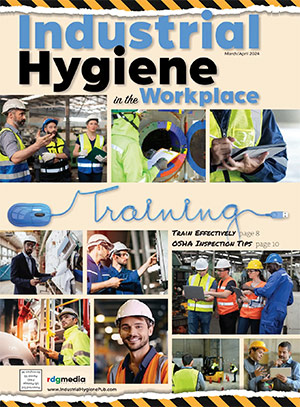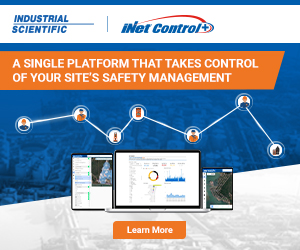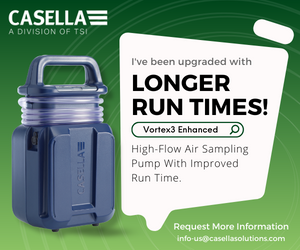Breathe Easy: Here’s a 10-Step Training Plan on Respiratory Protection
Mark Stromme, Editor, J. J. Keller & Associates, Inc.
Employees depend on a respirator to keep them safe and healthy when working in a hazardous atmosphere. Make sure they understand how to safely use the equipment.
Overview
 Before you can require employees to wear respirators, the Occupational Safety and Health Administration (OSHA) requires you to take steps to prevent the hazardous atmosphere from developing in the first place. Some of these control measures can include:
Before you can require employees to wear respirators, the Occupational Safety and Health Administration (OSHA) requires you to take steps to prevent the hazardous atmosphere from developing in the first place. Some of these control measures can include:
- Enclosing an operation,
- Substituting a less hazardous material,
- Providing improved general ventilation, and
- Installing local exhaust ventilation.
If these control measures aren’t feasible or effective (or while the control measures are being put int
o place), employees must wear respiratory protection. Proper training is critical, because improper use of a respirator can lead to serious illness or death.
Specific Training Elements
Follow this 10-step approach to effectively train on respirator use. The rest of this article is written in a script-type format for you, the safety trainer, to deliver to company employees.
1) Introduce the Topic
Your employer takes steps to keep the air clean. You can help keep these control measures effective. There are several way to do about doing so for an employer. For example, if a certain operation is set up so that a chemical is enclosed in tanks, piping or other containers, make sure you keep the equipment closed. If a job calls for using a certain chemical, don’t substitute something else. When it comes time to turn on ventilation equipment to do a job, make sure you use the equipment; if said equipment isn’t working properly, report the problem immediately.
Despite these control measures, sometimes the air still isn’t safe to breathe. In this case, you’ll have to wear a respirator while you work.
2) Explain Air Contaminants
Air contaminant hazards can include dusts, aerosol mists, metal fumes, evaporated vapors, released gases or oxygen-deficient atmospheres. Some particulates can cause metal fume fever, silicosis or asbestosis. In the short term, some chemical vapors can cause dizziness or nausea; in the long term, some can cause liver damage or cancer. Some gases act as asphyxiants, and overexposure can cause death. Similarly, oxygen-deficient atmospheres can be deadly.
OSHA sets permissible exposure limits for many contaminants to help employers determine if employee exposures are at safe levels. If control measures don’t reduce exposures to these safe levels, workers must wear respirators.
3) Outline Capabilities and Limitations of Your Respirators
There are basically two types of respirators: air-purifying respirators (including dust masks, gas masks, chemical cartridge respirators and powered air-purifying respirators) clean the air as you inhale, and atmosphere-supplying respirators supply you with a separate source of clean air (through a hose or a tank you carry on your back).
The capabilities of a respirator depend a lot on the type and amount of the air contaminant and the work being done. For example, a dust mask (an air-purifying respirator) is capable of filtering hazardous particulates from the air as you breathe, but it doesn’t protect you from hazardous levels of solvent vapors.
An air-purifying respirator with organic vapor cartridges can protect you from certain levels of solvent vapors, but its protection stops when the vapor levels are very high. No air-purifying respirator can protect you when oxygen levels are too low; in this case, you must use an atmosphere-supplying respirator.
4) Demonstrate How to Inspect, Put on and Remove, Use and Check the Seals of Your Respirators
Inspect the respirator before each time you use it. Inspect it again as you clean it. Self-contained breathing apparatus and respirators reserved for emergency use must be inspected monthly.
Each time you put on a respirator with a tight-fitting facepiece, you must perform two seal checks to be sure that the facepiece is properly seated and adjusted on your face. If you detect leaks during the seal checks, readjust the facepiece and repeat the checks.
5) Describe What to Do if a Respirator Malfunctions
It’s a clear sign that something is wrong if you can smell or taste the contaminant while you work; or if your breathing becomes strained; or if you notice a respirator part isn’t working properly. If your respirator stops working properly while you’re in a hazardous atmosphere, immediately exit to a safe area. Don’t remove the respirator until you’ve left the hazardous atmosphere.
6) Explain How to Use a Respirator in Case of an Emergency
If there’s a sudden release of a hazardous chemical while you’re working in an area that has escape-only respirators available (for example, where ammonia or chlorine are stored), put on the emergency respirator as you exit.
Some employees may be trained and authorized to perform emergency responses that require respirator use. Examples would include confined space rescue, emergency response to chemical releases and interior structural firefighting. If you aren’t authorized for these emergency actions, evacuate to a safe area.
7) Outline Procedures for Proper Respirator Maintenance and Storage
Don’t wear a dirty or damaged respirator. Using the wrong procedures to clean a respirator can damage it, so follow instructions. For example, never use paint thinner or other harsh solvents to clean a respirator.
Know how to report damage and get repairs. Only the manufacturer’s replacement parts can be used to repair a respirator. Store respirators so they will stay clean and will not be damaged.
8) Discuss Signs and Symptoms that Could Affect Employees’ Safe Use of a Respirator
Even though you’ve passed a medical evaluation before you wear a respirator, remember that people can change. Medical changes can affect your ability to safely wear a respirator. Examples of these can include the development of shortness of breath, dizziness, coughing, wheezing, chest pain, chest injuries, lung diseases, cardiovascular conditions or heart conditions. Report these signs and symptoms right away.
9) Emphasize the Consequences of Improper Respirator Use
You have a big responsibility to use the respirator correctly. If you aren’t using it properly, you’re breathing unsafe air. Overexposures can lead to serious illness and even death.
There are many examples of improper respirator use to discuss. One example would be using the wrong type of filter or cartridge with an air-purifying respirator. Employees may also be wearing a tight-fitting facepiece too loosely, so contaminated air could potentially leak in. Lastly, employees may not leave a contaminated area before removing the respirator.
10) Outline the Other Requirements in OSHA’s Respiratory Protection Standard
OSHA’s respirator standard does not begin and end with employee training. Some of OSHA’s other requirements include the following:
- The employer must identify and evaluate the respiratory hazards in the workplace;
- Respirators are required when ventilation or other engineering controls aren’t adequate to reduce exposures to safe levels;
- The employer must have a written respiratory protection program;
- The employer must provide employees with medical evaluations before they can use respirators;
- Employees who must use a respirator with a tight-fitting facepiece must be fit-tested before they can use the respirator;
- The employer must provide for cleaning, storing, inspecting and repairing respirators;
- Atmosphere-supplying respirators must use high-purity breathing gases; and
- Filters, cartridges and canisters must be properly identified. WMHS
About the Author:
Mark Stromme joined J. J. Keller & Associates, Inc. in 1994. With a background in monitoring OSHA, EPA and DOT regulations, he currently specializes in the OSHA 1926 construction and 1910 general industry regulations. His focus is on oil and gas safety, construction safety, electrical safety, mobile cranes, scaffolding, excavations and fall protection. He is also an authorized OSHA Construction Outreach Trainer. Stromme is responsible for monitoring, analyzing and summarizing 1910 and 1926 regulations for various J. J. Keller guides, manuals and newsletters. He has also written numerous trade publication articles on related topics. For more information, visit www.jjkeller.com/osha and www.jjkellerlibrary.com.
Share on Socials!
Report: OSHA has resolved only 2% of reports of retaliation against COVID whistleblowers
New Look Website Offers Faster Speeds, Updated Themes, and Improved Interface
Heimdahl Chernault of Edgewater Safety Consulting Is 2023 J. J. Keller Safety Professional of the Year
Leaders in Industrial Hygiene
Council for Accreditation in Occupational Hearing Conservation (CAOHC)
Subscribe!
Sign up to receive our industry publications for FREE!










